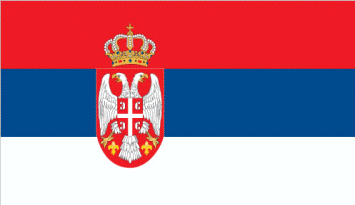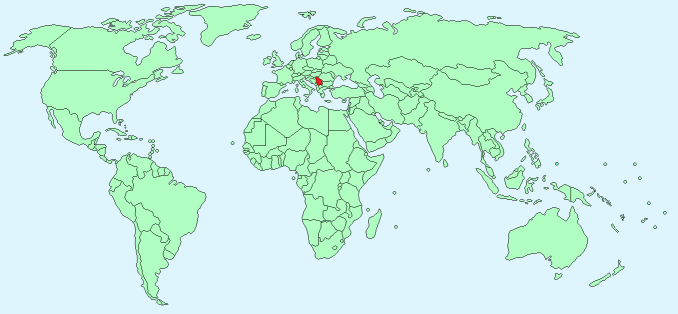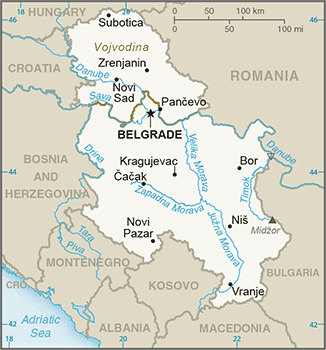Serbia


Continent – Europe
Region – south-east Europe, non EU member
Size – 77,474 km²
Geography – mountainous in south, fertile plains to north
Language – Serbian 88.1%, Hungarian 3.5%, Romany 2.1%, Bosnian 2%, other 4.3%
Religion – Serbian orthodox 84.6%, Catholic 5%, Muslim 3.1%, other 7.3%
Monetary Unit – Serbian dinar
Natural Resources – oil, gas, coal, iron ore, copper, zinc, antimony, chromite, gold, silver, magnesium, pyrite, limestone, marble, salt, arable land
Agriculture – wheat, maize, sunflower, sugar beets, grapes/wine, fruits (raspberries, apples, sour cherries), vegetables (tomatoes, peppers, potatoes), beef, pork, and meat products, milk and dairy products
Industry – automobiles, base metals, furniture, food processing, machinery, chemicals, sugar, tires, clothes, pharmaceuticals

Neighbouring Countries – Hungary, Romania, Bulgaria, Macedonia, Kosovo, Montenegro, Bosnia and Herzegovina, Croatia
Population – 7,176,794 (2015)
Population Growth Rate – -0.46%
Average Life Expectancy – 75.26
Capital City – Belgrade (population 1,182,000)
Highest Mountain – Midzor (2,169 m)
Longest River – Danube (2,888 km in Germany, Austria, Slovakia, Hungary, Croatia, Serbia, Romania, Bulgaria, Ukraine)
Climate – Continental – cold winters -3°C to 5°C and hot summers 15°C to 26°C
Yearly Rainfall – 68 cm approx
Plant Life – oak, beech, pine, fir, poplar, ash, white willow,
Animal Life – brown bear, grey wolf, lynx, deer, wild boar, fox, chamois, mouflon
Bird Life – imperial eagle, great bustard, white head vulture, corn crake, duck, goose, swan, grouse, partridge
Harvard Reference for this page:
Heather Y Wheeler. (2015). Serbia. Available: https://www.naturalhistoryonthenet.com/Facts_Figures/Country_Facts/serbia.htm. Last accessed Tuesday, July 19, 2016
Facts and Figures Pages
